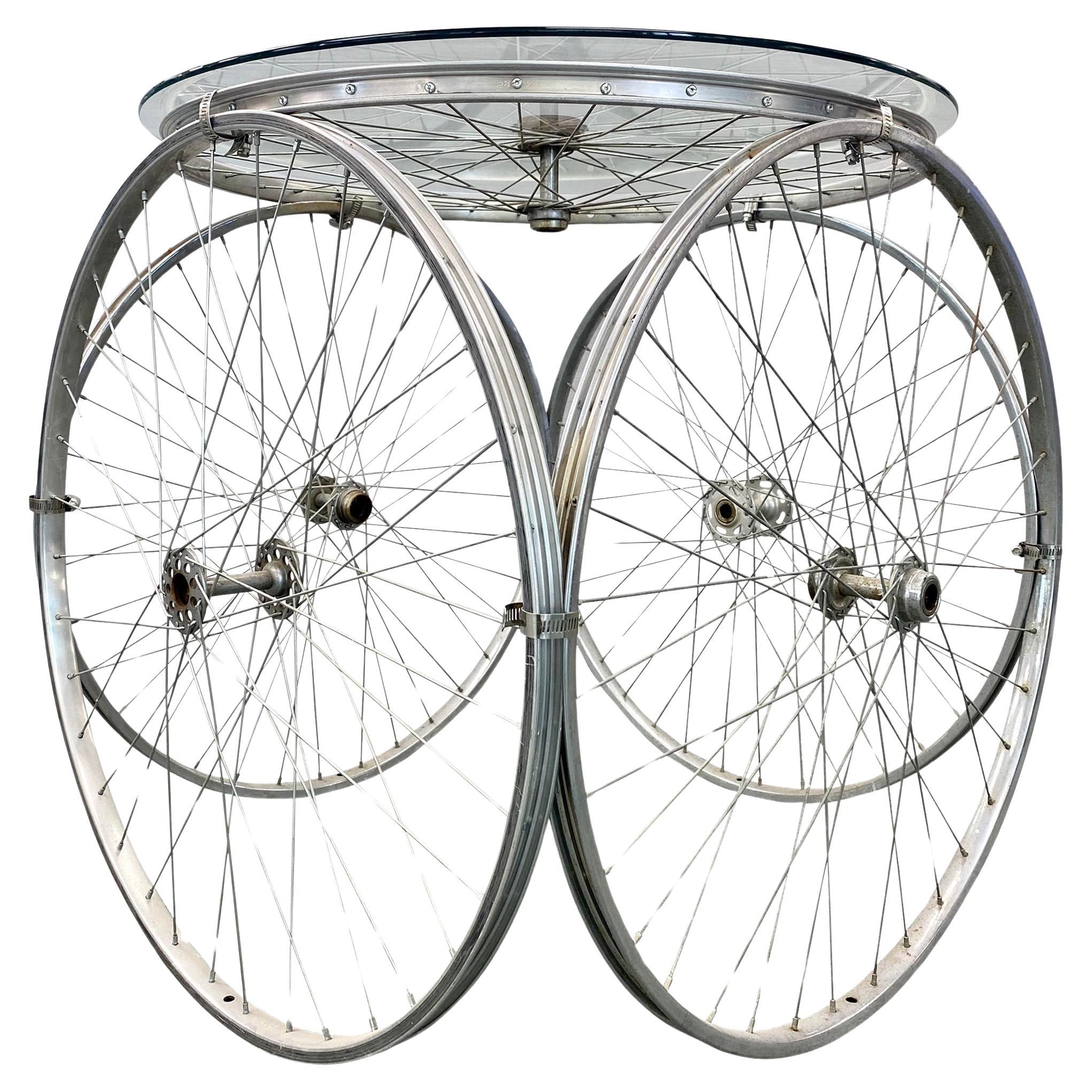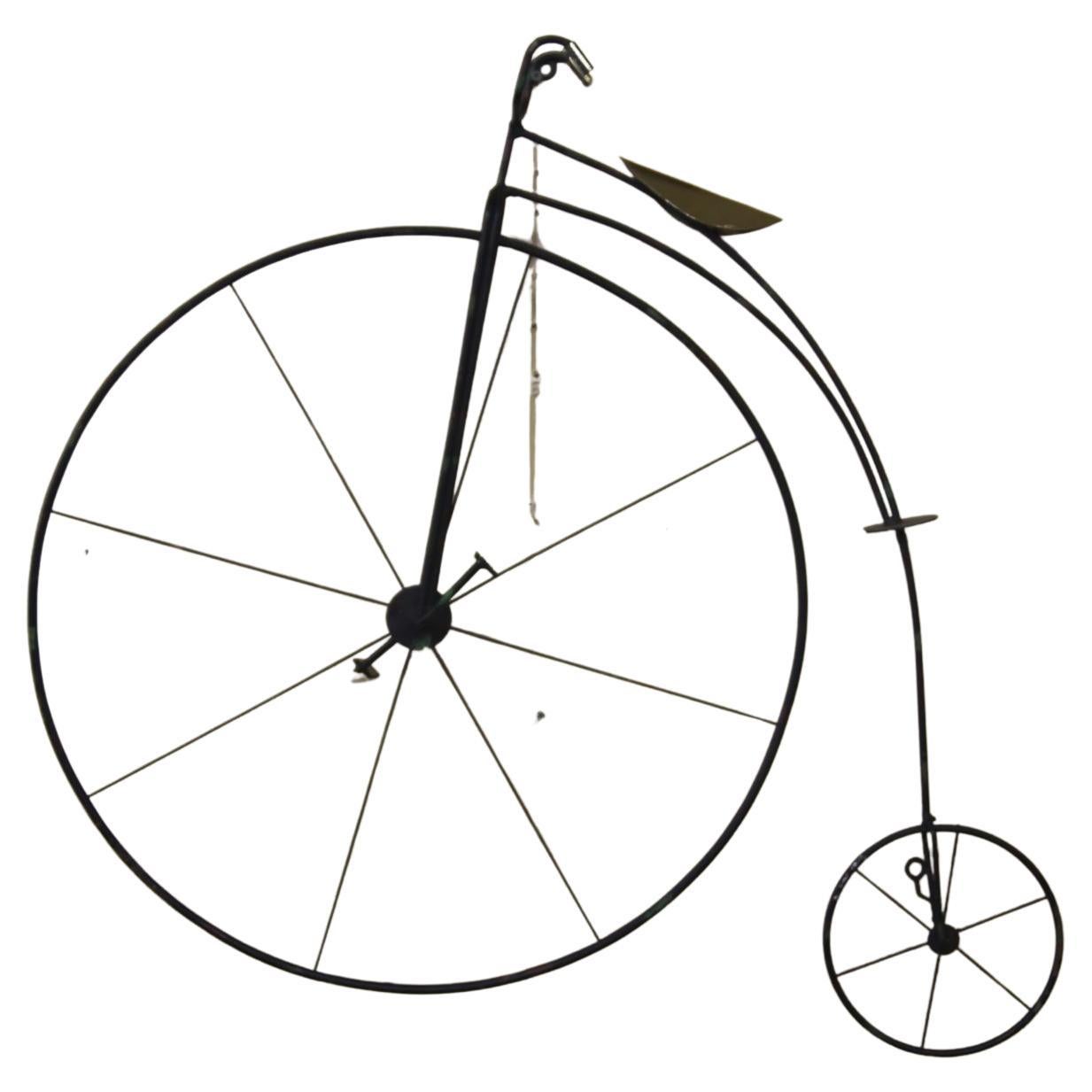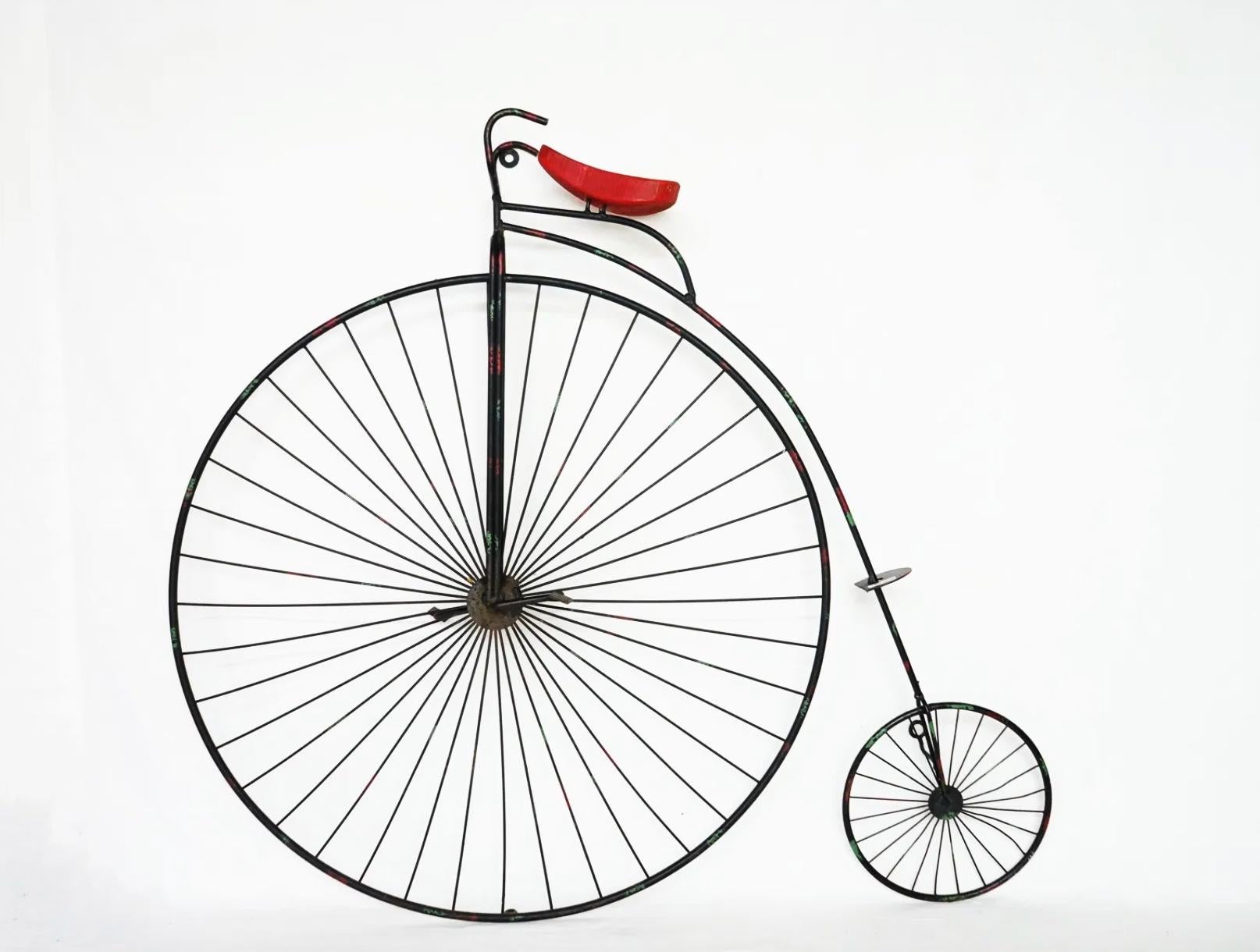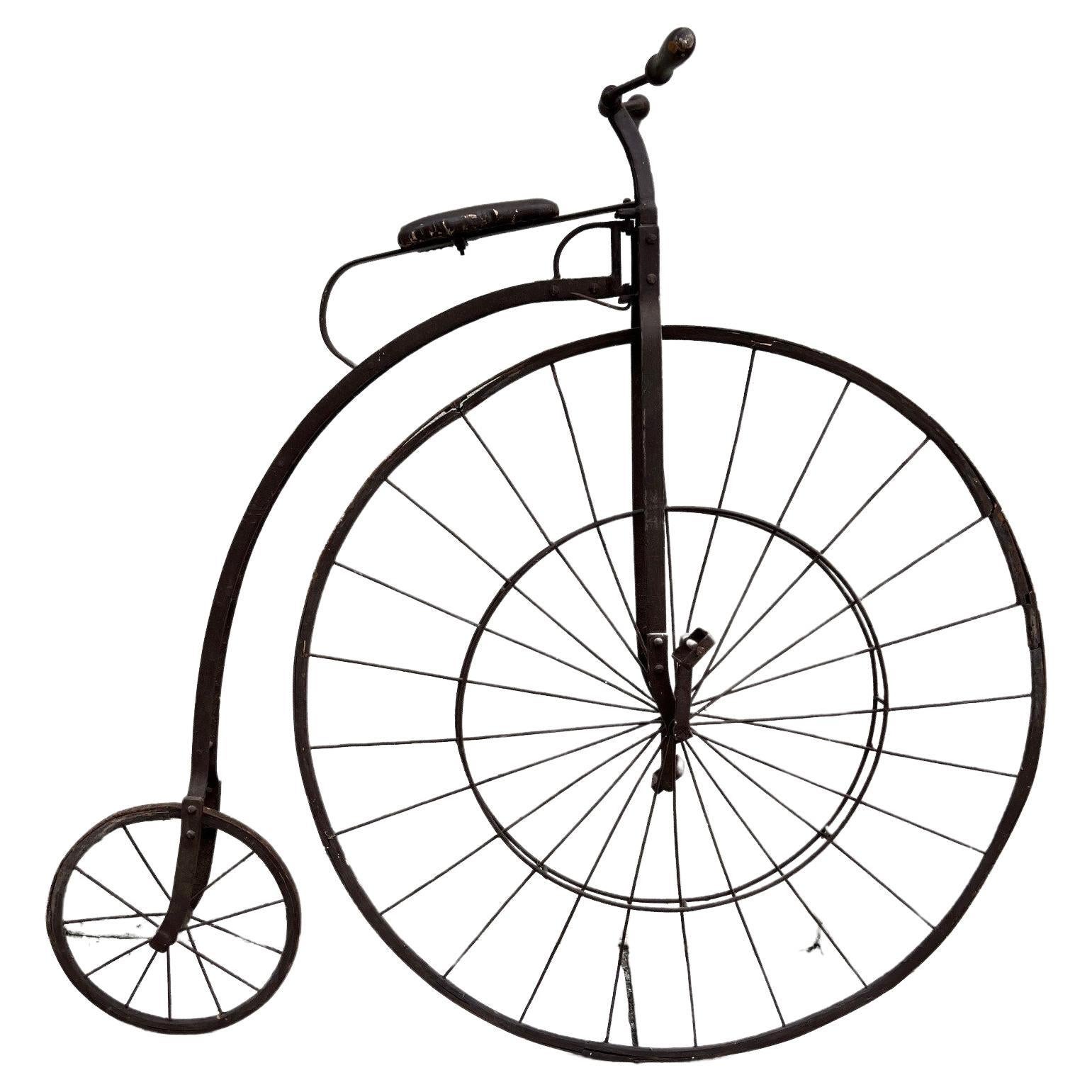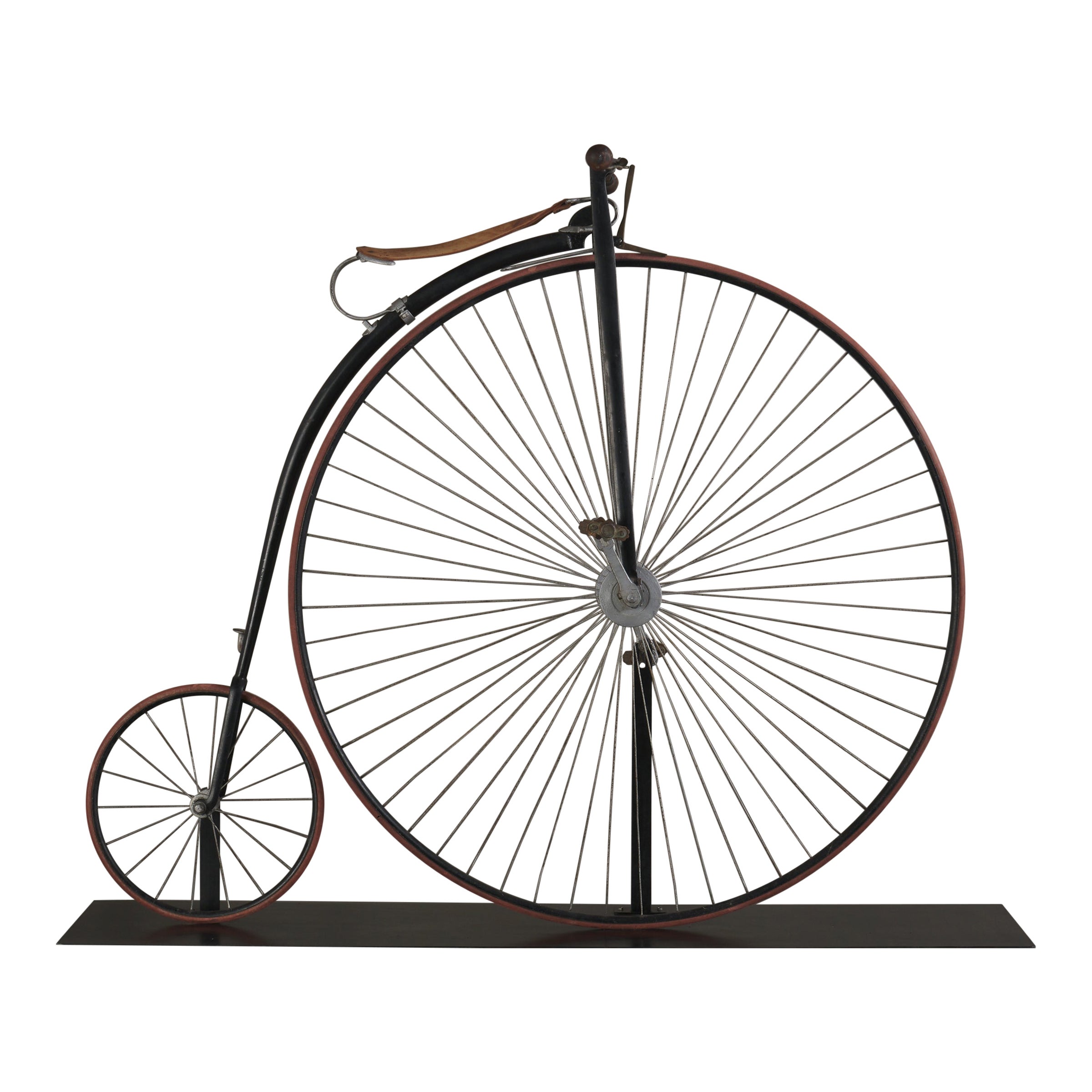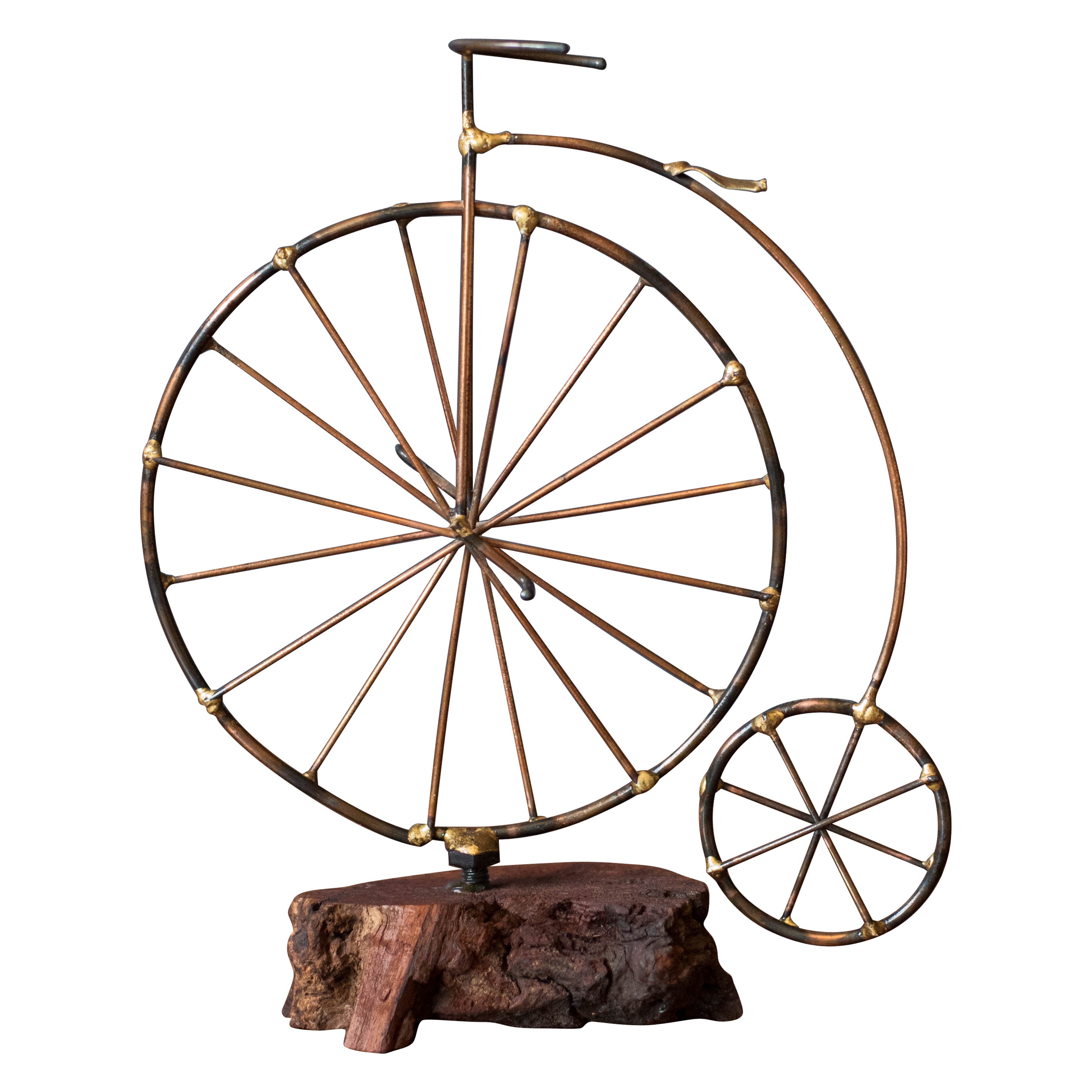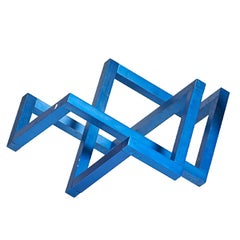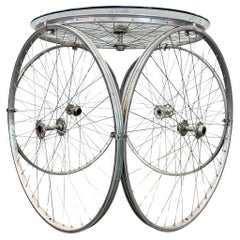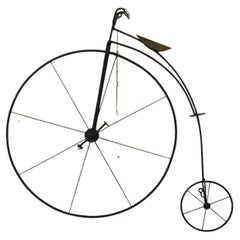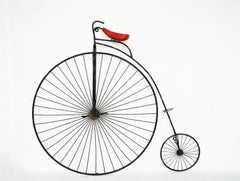Items Similar to Bicycle Wheel replica from the Philadelphia Museum (Duchamp Estate authorized)
Want more images or videos?
Request additional images or videos from the seller
1 of 6
Bicycle Wheel replica from the Philadelphia Museum (Duchamp Estate authorized)
$7,000
£5,314.28
€6,078.40
CA$9,780.02
A$10,877.51
CHF 5,679.90
MX$132,367.75
NOK 72,540.97
SEK 68,030.63
DKK 45,365.45
Shipping
Retrieving quote...The 1stDibs Promise:
Authenticity Guarantee,
Money-Back Guarantee,
24-Hour Cancellation
About the Item
After Marcel Duchamp
Bicycle Wheel replica from the Philadelphia Museum (estate authorized), 2002
Wheel and painted wood. In original box
11 × 6 1/2 × 3 4/5 inches
In original box produced exclusively for the Philadelphia Museum of Art in collaboration with the Duchamp Estate
The Bicycle Wheel Sculpture replica (9") was issued in limited quantity by the Philadelphia Museum of Art in 2002 for the 40th anniversary of the blockbuster 1973 Duchamp retrospective exhibition that was co-organized by the late Anne D'Harnecourt and Kynaston McShine. Today, it's a rare collector's item. We don't know how many were created and sold by the museum; but it was offered as a one-off, exclusively on the occasion of the Duchamp show, not editioned afterward and is rarely seen on the marketplace. It will be quite the conversation piece in any home or office - and would look gorgeous if displayed in a shadowbox or lighted pedestal!
Held in the original box. In fine condition.
- Dimensions:Height: 11 in (27.94 cm)Width: 6.5 in (16.51 cm)Depth: 3.8 in (9.66 cm)
- Medium:
- Movement & Style:
- After:Marcel Duchamp (1887 - 1968, French)
- Period:
- Condition:The piece is in excellent new condition; in the vintage box with expected age wear.
- Gallery Location:New York, NY
- Reference Number:1stDibs: LU1745216687702
About the Seller
5.0
Platinum Seller
Premium sellers with a 4.7+ rating and 24-hour response times
Established in 2007
1stDibs seller since 2022
443 sales on 1stDibs
Typical response time: 2 hours
- ShippingRetrieving quote...Shipping from: New York, NY
- Return Policy
Authenticity Guarantee
In the unlikely event there’s an issue with an item’s authenticity, contact us within 1 year for a full refund. DetailsMoney-Back Guarantee
If your item is not as described, is damaged in transit, or does not arrive, contact us within 7 days for a full refund. Details24-Hour Cancellation
You have a 24-hour grace period in which to reconsider your purchase, with no questions asked.Vetted Professional Sellers
Our world-class sellers must adhere to strict standards for service and quality, maintaining the integrity of our listings.Price-Match Guarantee
If you find that a seller listed the same item for a lower price elsewhere, we’ll match it.Trusted Global Delivery
Our best-in-class carrier network provides specialized shipping options worldwide, including custom delivery.More From This Seller
View AllRydbo Maquette, 1989-2000, unique geometric sculpture by renowned British artist
By Nigel Hall
Located in New York, NY
NIGEL HALL
Rydbo Maquette, 1989-2000
Painted Steel
Unique
The authenticity of this work has been confirmed by the artist
Provenance:
Christie's New York: J...
Category
Early 2000s Minimalist Abstract Sculptures
Materials
Steel
$12,000 Sale Price
20% Off
Maquette for Laureate (unique sculpture)
By Seymour Lipton
Located in New York, NY
Seymour Lipton
Maquette for Laureate, ca. 1968-1969
Nickel silver on monel metal
Unique
18 × 8 1/2 × 7 inches
Marlborough-Gerson Gallery, New York
Acquired from the above by the previous owner, 1969
thence by descent
Christie's New York: Monday, June 30, 2008 [Lot 00199]
Acquired from the above Christie's sale This unique sculpture by important Abstract Expressionist sculptor Seymour Lipton is a maquette of the monumental sculpture "Laureate" - one of Lipton's most iconic and influential works located on the Riverwalk in downtown Milwaukee, Wisconsin. Laureate is a masterpiece that was commissioned by the Allen-Bradley Company in memory of Harry Lynde Bradley and as an enhancement for the newly constructed Performing Arts Center. It is located on the east bank of the Milwaukee River at 929 North Water Street. The Bradley family in Milwaukee were renowned patrons of modernist sculpture, known for their excellent taste who also founded an eponymous sculpture park. For reference only is an image of the monumental "Laureate" one of Milwaukee's most beloved public sculptures. According to the Smithsonian, which owns a different unique variation of this work, "The full-size sculpture Laureate was commissioned by the Marcus Center for the Performing Arts in Milwaukee. In the initial drawings, Seymour Lipton combined details from the architectural plan with a wide variety of images, ranging from musical instruments to a lighthouse on the island of Tobago. He transformed the basic shapes from these sketches into a welded sculpture, which evokes a figure composed of columns, harp strings, and coiled rope. Lipton created this piece to celebrate achievement in the arts. The dramatic silhouette commands your attention, reflecting the title Laureate, which means worthy of honor and distinction. The final version of the piece is over twelve feet high and stands out against the pale, flat buildings of the arts center.,,"
Provenance
Marlborough-Gerson Gallery, New York
Acquired from the above by the previous owner, 1969
thence by descent
Christie's New York: Monday, June 30, 2008 [Lot 00199]
Acquired from the above Christie's sale
About Seymour Lipton:
Born in New York City in 1903, Seymour Lipton (1903-1986) grew up in a Bronx tenement at a time when much of the borough was still farmland. These rural surroundings enabled Lipton to explore the botanical and animal forms that would later become sources for his work. Lipton’s interest in the dialogue between artistic creation and natural phenomena was nurtured by a supportive family and cultivated through numerous visits to New York’s Museum of Natural History as well as its many botanical gardens and its zoos. In the early 1920s, with the encouragement of his family, Lipton studied electrical engineering at Brooklyn Polytechnic Institute and pursued a liberal arts education at City College. Ultimately, like fellow sculptor Herbert Ferber, Lipton became a dentist, receiving his degree from Columbia University in 1927. In the late 1920s, he began to explore sculpture, creating clay portraits of family members and friends.
In addition to providing him with financial security, dentistry gave Lipton a foundation in working with metal, a material he would later use in his artwork. In the early 1930s, though, Lipton’s primary sculptural medium was wood. Lipton led a comfortable life, but he was also aware of the economic and psychological devastation the Depression had caused New York. In response, he generally worked using direct carving techniques—a form of sculpting where the artist “finds” the sculpture within the wood in the process of carving it and without the use of models and maquettes. The immediacy of this practice enabled Lipton to create a rich, emotional and visual language with which to articulate the desperation of the downtrodden and the unwavering strength of the disenfranchised. In 1935, he exhibited one such early sculpture at the John Reed Club Gallery in New York, and three years later, ACA Gallery mounted Lipton’s first solo show, which featured these social-realist-inspired wooden works. In 1940, this largely self-taught artist began teaching sculpture at the New School for Social Research, a position he held until 1965.
In the 1940s, Lipton began to devote an increasing amount of time to his art, deviating from wood and working with brass, lead, and bronze. Choosing these metals for their visual simplicity, which he believed exemplified the universal heroism of the “everyman,” Lipton could also now explore various forms of abstraction. Lipton’s turn towards increasing abstraction in the 1940s allowed him to fully develop his metaphorical style, which in turn gave him a stronger lexicon for representing the horrors of World War II and questioning the ambiguities of human experience. He began his metal work with cast bronze sculptures, but, in 1946, he started welding sheet metal and lead. Lipton preferred welding because, as direct carving did with wood, this approach allowed “a more direct contact with the metal.”[ii] From this, Lipton developed the technique he would use for the remainder of his career: “He cut sheet metal, manipulated it to the desired shapes, then joined, soldered, or welded the pieces together. Next, he brazed a metal coating to the outside to produce a uniform texture.”[iii]
In 1950, Lipton arrived at his mature style of brazing on Monel metal. He also began to draw extensively, exploring the automatism that abstract expressionist painters were boasting at the time. Like contemporaries such as Jackson Pollock, Lipton was strongly influenced by Carl Jung’s work on the unconscious mind and the regenerative forces of nature. He translated these two-dimensional drawings into three-dimensional maquettes that enabled him to revise his ideas before creating the final sculpture.The forms that Lipton produced during this period were often zoomorphic, exemplifying the tension between the souls of nature and the automatism of the machine.
In the years following the 1950s, Lipton’s optimism began to rise, and the size of his work grew in proportion. The oxyacetylene torch—invented during the Second World War—allowed him to rework the surfaces of metal sculptures, thus eliminating some of the risks involved with producing large-scale finished works. In 1958, Lipton was awarded a solo exhibition at the Venice Biennale and was thus internationally recognized as part of a small group of highly regarded avant-garde constructivist sculptors. In 1960, he received a prestigious Guggenheim Award, which was followed by several prominent public commissions, including his heroic Archangel, currently residing in Lincoln Center’s David Geffen Hall.
A number of important solo exhibitions of his work followed at The Phillips Collection in Washington, DC (1964); the Milwaukee Art Center and University of Wisconsin, Milwaukee (1969); the Virginia Museum of Fine Arts in Richmond (1972); the Everson Museum in Syracuse, NY (1973); the Herbert E. Johnson Museum of Art of Cornell University in Ithaca, NY (1973); the National Collection of Fine Arts, Smithsonian Institution (now the Smithsonian American Art Museum) in Washington, DC (1978); and a retrospective in 1979 at The Jewish Museum in New York. In 1982 and 1984 alone, two exhibitions of his sculpture, organized respectively by the Mint Museum (Charlotte, NC) and the Hillwood Art Gallery of Long Island University (Greenvale, NY), traveled extensively across museums and university galleries around the nation. In 2000, the traveling exhibition An American Sculptor: Seymour Lipton was first presented by the Palmer Museum of Art of Pennsylvania State University in University Park. Most recently, in 2009, the Ackland Art Museum in Chapel Hill, NC mounted The Guardian and the Avant-Garde: Seymour Lipton’s Sentinel II in Context.
Since 2004, Michael Rosenfeld Gallery has been the exclusive representative of the Estate of Seymour Lipton and has presented two solo exhibitions of his work—Seymour Lipton: Abstract Expressionist Sculptor (2005) and Seymour Lipton: Metal (2008). In 2013, Michael Rosenfeld Gallery presented Abstract Expressionism, In Context: Seymour Lipton, which included twelve major sculptures by the artist, along with works by Charles Alston, Norman Bluhm, Beauford Delaney, Willem de Kooning, Jay DeFeo, Michael Goldberg, Adolph Gottlieb, Hans Hofmann, Lee Krasner, Norman Lewis, Conrad Marca-Relli, Boris Margo, Alfonso Ossorio, Richard Pousette-Dart, Milton Resnick, Charles Seliger...
Category
1960s Abstract Expressionist Abstract Sculptures
Materials
Metal, Silver
Untitled signed sculpture, from the collection of Dick Polich, Tallix Foundry
By Stephen Talasnik
Located in New York, NY
Stephen Talasnik
Untitled sculpture, from the collection of Dick Polich, Tallix Foundry, ca. 1997
Cast light metal
signed by the artist on the work (see close up photograph)
6 3/5 × 12 × 4 inches
Provenance
Estate of Dick Polich, founder of the legendary Tallix Foundry and Polich Art works Beacon, NY
Manufacturer
Stephen Talasnik at Tallix Foundry, Beacon, New York
This work is signed by the artist (see close up photograh)
Abstract metal sculpture
The work is lightweight so it is believed to be in aluminum or an aluminum alloy,
Provenance: acquired from the Estate of Dick Polich - founder of the legendary Tallix foundry and Polich Art Works.
Polich and Tallix fabricated significant sculptural works over many years, collaborating with such as, Willem de Kooning, Jeff Koons, Roy Lichtenstein, Frank Stella, Helen Frankenthaler, ERTE, Julian Schnabel, Richard Artschwager, Isamu Noguchi, Isaac Witkin...
Category
1990s Abstract Expressionist Abstract Sculptures
Materials
Metal
Geometric abstraction mid century modern constructivist Signed metal sculpture
Located in New York, NY
Forrest Myers
Untitled geometric abstraction, 1976
Painted aluminum
Signed in the metal with the artist's incised initials (FM) and stamp numbered 52/75; bears Treitel-Gratz foundry ...
Category
1970s Constructivist Abstract Sculptures
Materials
Metal
Yellow Disc Hand painted steel sculpture on marble base Signed 21/35 British Art
By Phillip King
Located in New York, NY
Phillip King
Yellow Disc, 2007
Hand painted steel on a marble base
Signed and numbered 21/35 on base.
Provenance: Bernard Jacobson Gallery, London
Private Collection, UK
5 3/5 × 12 ...
Category
Early 2000s Abstract Abstract Sculptures
Materials
Marble, Steel
The Lady maquette, replica of Chicago Picasso sculpture, American Bridge Company
By Pablo Picasso
Located in New York, NY
(After) Pablo Picasso
The Lady (Maquette), ca. 1967
Mixed Media Sculpture edition Cor-ten Steel
This maquette is based upon the original Chicago Picasso-a monumental sculpture by Pablo Picasso in Chicago, Illinois. The sculpture, dedicated on August 15, 1967, in Daley Plaza in the Chicago Loop...
Category
1960s Abstract Abstract Sculptures
Materials
Stone, Steel
You May Also Like
Marcel Duchamp-Inspired Artist-Made Bicycle Wheel Table
By Marcel Duchamp
Located in Round Top, TX
A special, artist-created piece, created as an homage to Surrealist Marcel Duchamp. Four Japanese, aluminum bicycle wheels, connected to form a sturdy base, with a fifth wheel supporting a tempered glass top. Made to allow for bolting into a concrete exterior slab, but easily and artfully fits into an interior space. This fantastic conversation piece was handmade by Dallas artist Shaun Nelson in the early 2000s.
We love the idea of mixing a variety of mediums to express a genuine love...
Category
21st Century and Contemporary American Tables
Materials
Aluminum
$1,336 Sale Price
20% Off
Curtis Jere High Wheel Bike Sculpture
By Curtis Jeré
Located in Asbury Park, NJ
Pleased to offer this wall hanging high wheel metal bike sculpture by Curtis Jere. This piece is marked 1992. The black bike has a nice brass seat.
Category
1990s American Figurative Sculptures
Materials
Metal
Curtis Jere High Wheel Bicycle Iron Sculpture & Wall Decor
By Curtis Jeré
Located in Plainview, NY
This Curtis Jere High Wheel Bicycle Iron Sculpture is an exquisite blend of artistry and nostalgia, capturing the essence of 19th-century innovation in transportation. The piece is ...
Category
20th Century Minimalist More Art
Materials
Iron
Early 20th Century Antique High Wheel Bicycle
Located in Stamford, CT
Fabulous high wheeler bicycle, I believe from the Early 20th century circa 1920s. It seems to be a size smaller than a Penny Farthing and larger than a chil...
Category
Early 20th Century Antiquities
Materials
Iron
$2,048 Sale Price
34% Off
English Pennyfarthing High Wheel Bicycle, 1870-1880
Located in Los Angeles, CA
Rare and completely ridable.
Bike: 57.5" H x 27" W x 66" D
Base: 70" W x 15" D
Category
Antique 19th Century English Sports Equipment and Memorabilia
Materials
Aluminum, Iron
Vintage High Wheel Bicycle Metal Sculpture on Burl Wood Base
By Curtis Jeré
Located in San Jose, CA
Mid-Century Modern studio art high wheeler bicycle sculpture circa 1970's. This piece is crafted of mixed metals mounted on a free form burl wood base. The perfect accent tabletop or desktop piece to complement mid century and industrial modern decor.
Category
Vintage 1970s Mid-Century Modern Abstract Sculptures
Materials
Metal
